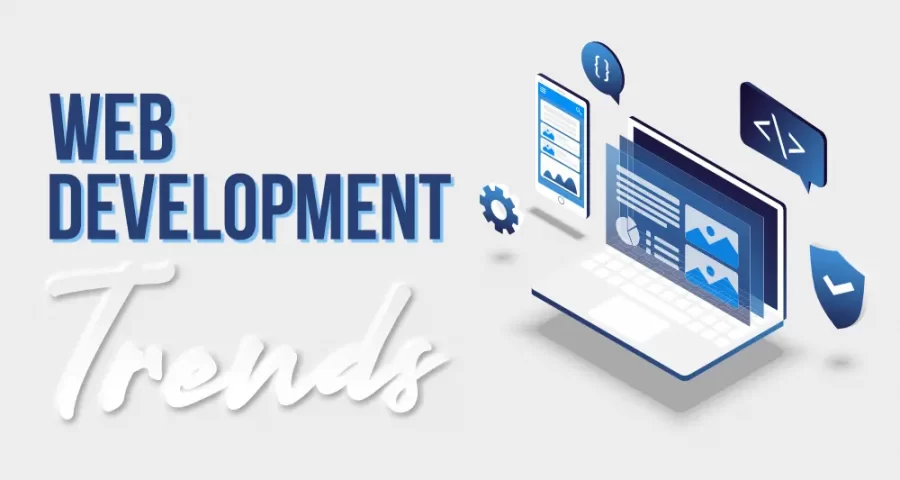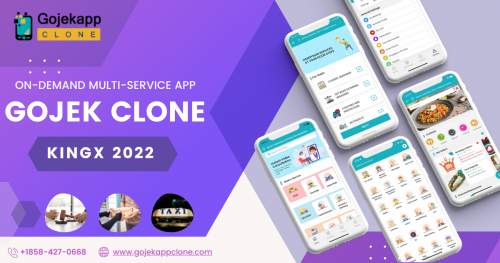The field of web development has experienced an incredible evolution, driven by improvements in technology, changing user expectations, and new developments. Web development has seen substantial change from the early era of static websites to the contemporary era of interactive web applications, giving new possibilities and pushing the limits of what can be accomplished on the web.
Keeping up with the most recent trends and advances in web development is essential for developers and businesses alike in this era of rapid technological change. Knowing how web development has changed over time can give you useful insights into the tools, methods, and procedures that influence the digital environment.
This article examines the growth of web development, covering significant developments and trends that have influenced the sector.
Responsive Web Design
A method of web creation called responsive web design makes sure that websites can adapt to and display effectively on a range of screens and devices, including desktops, laptops, tablets, and mobile phones. Prior to the rise of mobile devices, websites were largely created for desktop computers; however, it is now crucial to deliver the best user experience possible across all platforms.
This is accomplished with responsive web design, which makes use of CSS media queries, fluid grids, and adaptable pictures. The fluid grid technique ensures that sections are evenly placed and proportioned by allowing content to change proportionally to the screen size. Without losing clarity or distorting the layout, flexible graphics scale dynamically to accommodate different devices. Developers may construct a responsive layout that effortlessly shifts by using CSS media queries, which allow them to apply different styles dependent on the size of the screen.
SPAs (Single-Page Applications)
Single-Page Applications (SPAs) are web applications that dynamically update the content as users interact with the application without necessitating a full page reload. SPAs load all the required code, data, and assets during first load. This method offers a user experience that is smoother and more participatory, much like desktop programmes.
JavaScript frameworks like Angular, React, or Vue.js are frequently used to build SPAs. These frameworks give programmers the ability to build reusable components, effectively manage application state, and update particular sections of the page without refreshing the entire page’s content. SPAs lessen server load while delivering a quick and interesting user experience by utilising client-side rendering and data retrieval through APIs.
PWAs (Progressive Web Apps)
PWAs (Progressive Web Apps) strive to provide an app-like experience inside a web browser by fusing the finest elements of online and mobile applications. To support features like offline capability, push notifications, and home screen installation, PWAs make use of contemporary web technologies like service workers, web app manifests, and caching.
JavaScript Frameworks
By giving programmers strong tools and libraries to create intricate and dynamic web apps, JavaScript frameworks like Angular, React, and Vue.js have had a tremendous impact on web development.
Angular is an extensive framework supported by Google. Facebook created React, a well-liked JavaScript library for creating user interfaces.
Serverless Architecture
Developers can concentrate on designing and deploying certain functions or code snippets using serverless architecture, also known as Function as a Service (FaaS), in the cloud instead of having to worry about maintaining servers or other infrastructure. Developers create serverless environments in which certain events, such HTTP requests or database updates, activate particular activities.
Popular serverless systems like AWS Lambda, Azure Functions, and Google Cloud Functions enable programmers to deploy functions created in a variety of programming languages. These systems manage scaling, resource allocation, and fault tolerance automatically, which lessens the workload associated with infrastructure administration. The advantages of serverless architecture include cost effectiveness (you only pay for the time spent actually performing the task), automatic scalability, and quick development cycles.
Headless CMS
The headless CMS (Content Management System) strategy involves separating the front-end presentation layer from the CMS backend. Headless CMSs supply content via APIs that may be accessed by any front-end technology, in contrast to traditional CMSs, which often combine content management functionality with a tightly integrated front-end rendering system.
Headless CMSs give content producers an easy-to-use interface for managing their content, while giving developers the freedom to use the technologies of their choice to create the user experience. This division gives front-end designers and developers more latitude, which makes it simpler to develop custom experiences.
Wasm WebAssembly
Wasm is a common abbreviation for WebAssembly, a binary instruction format created for the web’s high-performance applications. It is a low-level, effective bytecode that web browsers can run at almost native speed.
Applications written in languages other than JavaScript, such C, C++, and Rust, can be compiled into Wasm bytecode using WebAssembly. As a result, web developers now have more options because they can use these languages’ already-existing codebases, libraries, and performance enhancements.
Artificial Intelligence (AI) Integration
Web development is increasingly incorporating artificial intelligence (AI), which is changing how websites and applications interact with individuals as well as analyse data. Artificial intelligence (AI) methods are being used to improve user experiences and offer personalised, intelligent features, such as machine learning and natural language processing.
Several applications of AI in web development can be seen:
- AI-powered chatbots and virtual assistants are used to automate customer service, offer individualised recommendations, and help customers navigate websites and applications.
- Systems for product suggestions and personalization: AI algorithms examine user information, preferences, and behaviour to present customised information, products, or experiences on websites and e-commerce platforms.
- Content Generation: AI algorithms can produce content like articles, descriptions of goods, or social media posts according to specific parameters or user inputs, preserving valuable time for content creators.
- Data Analysis and Insights: By applying AI approaches to analyse massive datasets and extract insightful information, businesses are able to make data-driven decisions and improve their operations.
Final thoughts
We can better understand how web development has changed over time by looking at these trends and innovations, which will enable web developers to make web apps that are more interesting, scalable, and effective. We can also predict how web development will develop in the future and the potential it has to change the digital world.
Also Read: 6 Types Of AI-Generated Content For Effective Marketing Campaigns









